
Navigating the uncertainty of what comes next in life is a challenge many of my life coaching clients face, whether it’s in their careers, relationships, or personal growth. Figuring out the next steps can be one of life’s most daunting tasks. Whether you’re at a career crossroads, making personal decisions, or feeling stuck, this uncertainty can lead to confusion, anxiety, and a sense of being lost. However, gaining clarity about your future direction can transform these feelings into confidence and purpose, empowering you to move forward with a clear sense of what you want to achieve.
This article will guide you through a three-step process I use with clients to help them discover what’s next in their lives. These steps have proven effective for many, and I believe they will be valuable for you as well. The first step, Identifying Your Non-Negotiables, involves recognizing the core values and essential requirements that contribute to your happiness and fulfillment. These non-negotiables are the foundation for making informed decisions that align with the life you want to live.
Next, in Finding What’s Holding You Back, we’ll explore the internal and external barriers that may be hindering your progress. By identifying limiting beliefs, unproductive habits, and societal expectations, you can begin to overcome these obstacles and pave the way for personal growth.
Finally, in Defining Your Willingness and Readiness, you’ll assess what you’re prepared to pursue now and what might require more time or development. Understanding your readiness is crucial for creating a realistic and actionable plan for your future.
This journey is about more than just making decisions; it’s about setting the stage for creating your version of an ideal life. With an open mind and a willingness to introspect, you’ll be better equipped to navigate your path forward with confidence and clarity. Let’s begin the process of discovering what’s next for you.
Step 1: Identifying the Non-Negotiables That Shape Your Future
Identifying your non-negotiables—those core values and principles you cannot compromise on—is crucial when you’re uncertain about your next steps in life. Without a clear understanding of these, it’s easy to be swayed by external pressures or distractions, leading to decisions that don’t align with what you deeply value. This misalignment often leads to confusion, dissatisfaction, and a sense of disconnection from the life you want to live, ultimately resulting in frustration and regret as you realize you’ve strayed from the path that offers true fulfillment and inner peace.
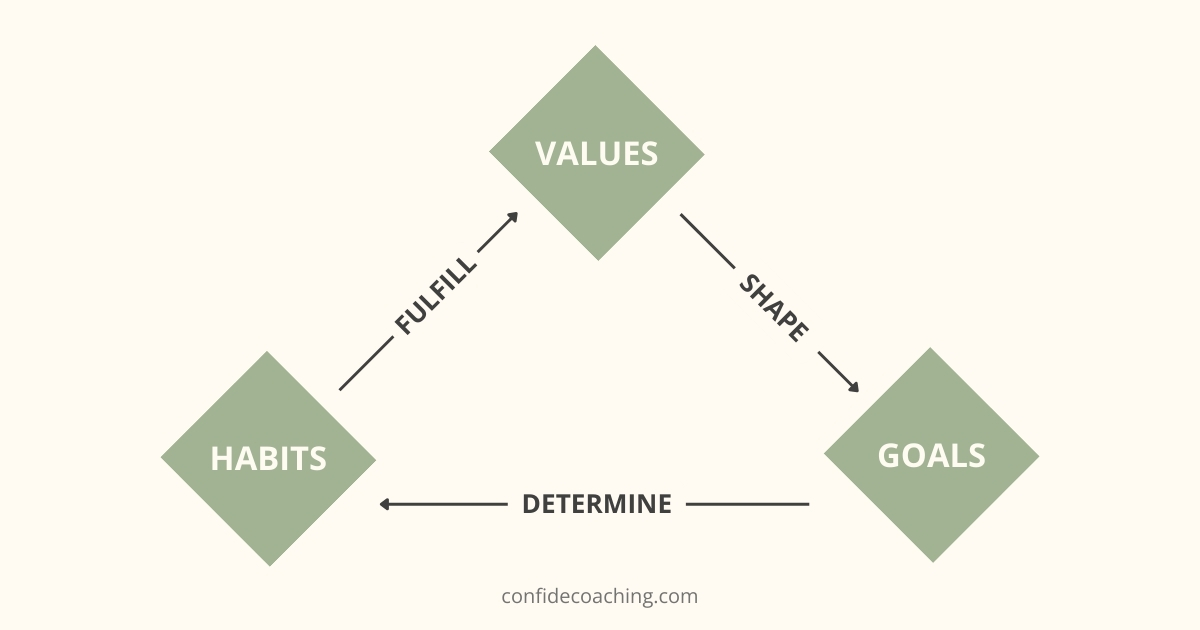
Understanding Non-Negotiables
What Are Non-Negotiables?
Non-negotiables are the essential, non-compromising requirements that you need to live a life aligned with your core values. These might include things like financial stability, work-life balance, or time for creativity. It’s important to differentiate between non-negotiables and preferences. While preferences are things you would like to have, non-negotiables are the must-haves that you cannot live without.
Identifying Your Personal Non-Negotiables
Reflecting on Core Values
Identifying your non-negotiables starts with a deep reflection on your core values. These values are the principles and beliefs that guide your decisions and actions. To help you uncover them, follow this simple process:
1. Reflect on Meaningful Experiences:
- Think about the most significant moments in your life—times when you felt truly fulfilled, proud, or at peace. What values were at play during these moments? For example, if you felt most satisfied when helping others, values like compassion and service might be important to you.
2. Identify What Triggers Strong Emotions:
- Consider situations that evoke strong emotional responses, whether positive or negative. Strong reactions often indicate that a core value is being upheld or challenged. For instance, feeling angered by injustice may highlight a deep value for fairness or equality.
3. Consider Who You Admire:
- Reflect on the people you admire most. What qualities or behaviors do they exhibit that you respect? These qualities can provide insights into your own values. If you admire someone for their honesty and integrity, those might be core values for you.
4. Ask Key Questions:
- To further clarify your values, ask yourself questions like:
- What principles do I believe are essential for a good life?
- What motivates me to get out of bed each morning?
- What do I stand for, even in the face of adversity?
5. Rank and Prioritize:
- After identifying potential values, try ranking them in order of importance. This exercise helps you see which values are most central to your identity and should be prioritized in your life decisions. The top 2-5 on your list are your core values.
6. Test Your Values:
- Finally, test your identified values by applying them to hypothetical or real-life situations. Ask yourself, Would I be willing to make sacrifices to uphold this value? If the answer is yes, it’s likely a core value.
Once you have identified your core values, think about how they translate into non-negotiables. For example, if creativity is a core value, a non-negotiable might be having regular time dedicated to creative pursuits. If family is a core value, you might prioritize jobs that allow you to spend quality time with loved ones.
Assessing Current Life Requirements
In addition to core values, it’s essential to consider the practical, emotional, and psychological needs that must be met in your life. Dr. Susan David, Harvard Medical School psychologist and author of Emotional Agility advises, “Our emotions contain data that inform us of our needs and values. When we listen to this data, we can make choices that better serve our well-being.”
Assess your current life requirements by considering aspects such as financial stability, health, and relationships. What are the non-negotiable conditions that must be present for you to thrive?
For instance, if financial stability is crucial, your non-negotiables might include a steady income and job security. If health is a priority, you might require a work environment that supports your physical and mental well-being. These non-negotiables will serve as a foundation for your decision-making.
Examples of Common Non-Negotiables
To illustrate how non-negotiables can shape your decisions, consider the following examples:
Financial Stability
Financial stability is a common non-negotiable for many people. Ensuring a steady income to cover essential living expenses and build savings might lead you to prioritize secure job opportunities over more risky ventures. However, financial stability can be achieved in many different ways, and it’s important to recognize that your definition of financial stability may not be the same as someone else’s.
It is worth asking yourself: What standards of financial stability am I adhering to? Are these standards driven by your own needs and values, or are they influenced by societal expectations or the financial goals of others?
Bill Perkins, in his book Die with Zero, challenges conventional thinking about financial stability and encourages a more purposeful approach to money and life. He argues that accumulating wealth without a clear plan for using it can lead to missed opportunities for fulfillment and happiness. Instead, Perkins advocates for aligning your financial strategy with the experiences and goals that truly matter to you.
Reflecting on what financial stability means to you can help you tailor your financial goals to suit your unique life circumstances and aspirations. Are you prioritizing the accumulation of wealth for its own sake, or are you considering how your financial decisions can enhance your quality of life now and in the future? Perkins emphasizes the importance of using your resources to create memorable experiences and enjoy life while you can, rather than delaying gratification indefinitely.
This perspective encourages you to think critically about whether your pursuit of financial stability is actually contributing to your overall well-being. Are you focusing solely on income and savings, or are you also considering how your financial decisions impact your happiness and life satisfaction? By questioning the standards you’ve set, you can ensure that your financial strategy supports a lifestyle that aligns with your core values and life goals.
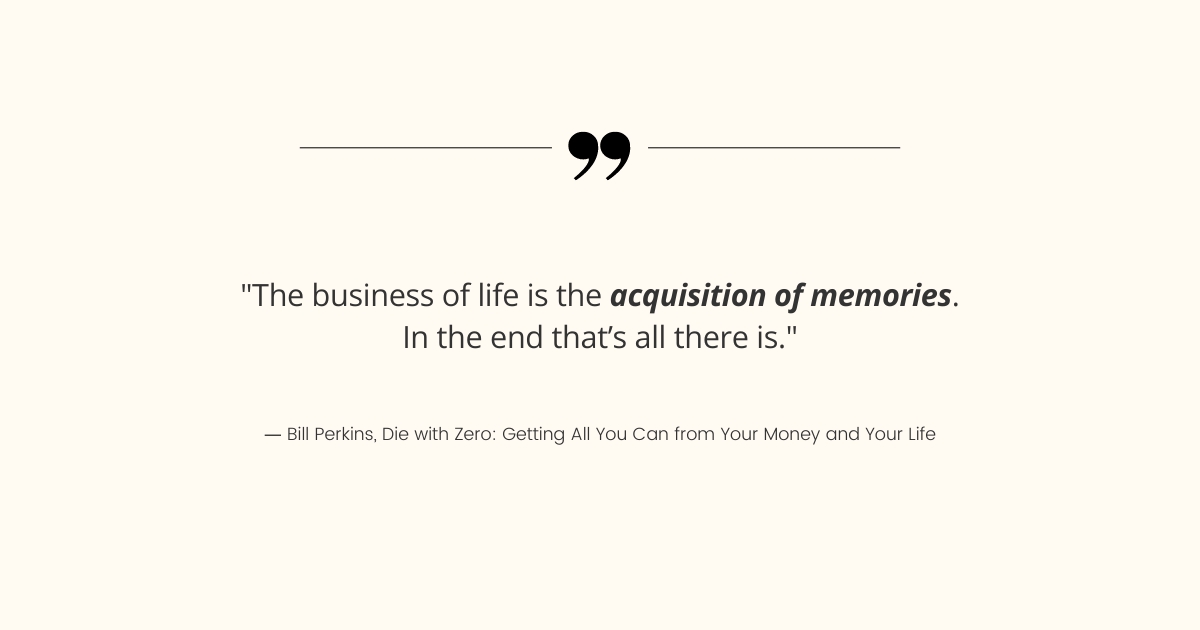
Work-Life Balance
Work-life balance is a critical non-negotiable, especially for those who value quality time with family, health, hobbies, or self-care. Achieving this balance means not just managing your time but ensuring that a substantial part of your energy is devoted to what matters most.
Many of my middle-aged clients express a desire to spend more time with their children before they leave home or to establish healthier habits as they start noticing changes in their physical appearance or health. Others, who have already achieved traditional markers of success, find themselves seeking new passions that reignite excitement and purpose. They wish to explore and pursue something new, but feel trapped by the belief that midlife is their peak earning period, and they can’t afford to divert attention until they achieve their financial goals.
This mindset, however, often leads to one of the top regrets mentioned in Bronnie Ware’s book The Top Five Regrets of the Dying: “I wish I hadn’t worked so hard.” Ware, a palliative care nurse, found that many people regret sacrificing precious time with loved ones and neglecting their own well-being in pursuit of career success. Balancing work with personal fulfillment is crucial to avoid this regret. By prioritizing what truly matters now, rather than postponing it for later, you can create a life that is rich in both achievement and personal satisfaction, ensuring that you don’t look back with regret.
Autonomy in Decision-Making
Autonomy in decision-making is a vital non-negotiable for many who value the ability to shape their own lives. In his book Drive: The Surprising Truth About What Motivates Us, Daniel Pink argues that autonomy is one of the key drivers of motivation and fulfillment. Pink suggests that when people have control over their work and the way they approach tasks, they are more engaged, creative, and satisfied. This perspective reinforces the idea that autonomy is not just a preference but a fundamental need that can significantly impact your overall happiness and success.
However, achieving autonomy isn’t just about choosing a particular career path; it’s about establishing an environment where your decisions are respected and your ideas are valued. It’s essential to ask yourself: What level of autonomy do I truly need to feel satisfied in my work and personal life? Are you seeking complete independence, or do you thrive in collaborative environments where your input is highly regarded?
In many cases, autonomy also requires setting clear boundaries and communicating your needs effectively. This might involve negotiating flexible work arrangements, defining the scope of your responsibilities, or ensuring that you have the freedom to explore creative solutions without micromanagement.
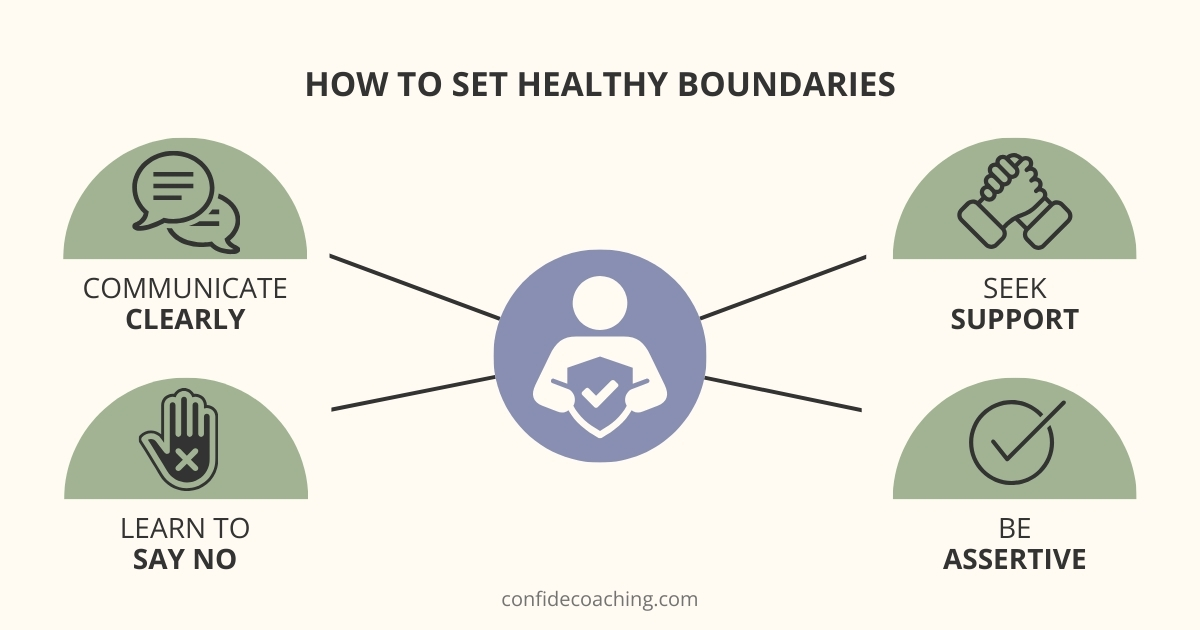
Autonomy in decision-making also aligns with the idea of taking ownership of your life. By making choices that reflect your values and priorities, you can create a professional and personal life that feels authentic and rewarding. It’s not just about having control—it’s about using that control to craft a life that aligns with your deepest aspirations and values.
In summary, if autonomy is a non-negotiable for you, it’s important to seek opportunities that allow you to exercise this freedom meaningfully. Whether through entrepreneurship, leadership, or simply setting strong boundaries within your current role, ensuring that you have the autonomy you need will lead to a more satisfying and self-directed life.
Aligning Non-Negotiables with Future Planning
How Non-Negotiables Shape Your Future Choices
Your non-negotiables play a critical role in shaping your future choices. Whether it’s choosing a career path, building relationships, or deciding where to live, these fundamental needs and values guide your decisions. Staying true to your non-negotiables sometimes requires saying no to opportunities that don’t align with them, even when those opportunities seem appealing or are socially expected.
Prioritizing Non-Negotiables in Decision-Making
To ensure that your decisions respect your non-negotiables, it’s essential to keep them front and center during any planning or decision-making process. Regularly reflect on how your thoughts, emotions, and behaviors align with your core values. This self-awareness allows you to make decisions that honor your non-negotiables and lead to more fulfilling outcomes. It’s about consistently checking in with yourself to ensure that your actions support what truly matters to you.
Flexibility vs. Rigidity
While it’s important to remain firm on your non-negotiables, it’s equally important to reassess them in light of changing circumstances. Life is dynamic, and what might have been a non-negotiable at one point may evolve as you grow and your situation changes. Being adaptable without compromising your core values is key. This approach allows your non-negotiables to guide you without becoming rigid constraints, ensuring that your decisions remain relevant and aligned with your evolving life goals.
Identifying your non-negotiables is a powerful first step in shaping a life that aligns with your deepest values and needs. By reflecting on what truly matters, whether it’s financial stability, work-life balance, or autonomy in decision-making, you lay the groundwork for making informed and fulfilling decisions. As you move forward, keep these non-negotiables at the forefront of your planning, allowing them to guide you toward a future that resonates with who you are and what you truly want out of life.
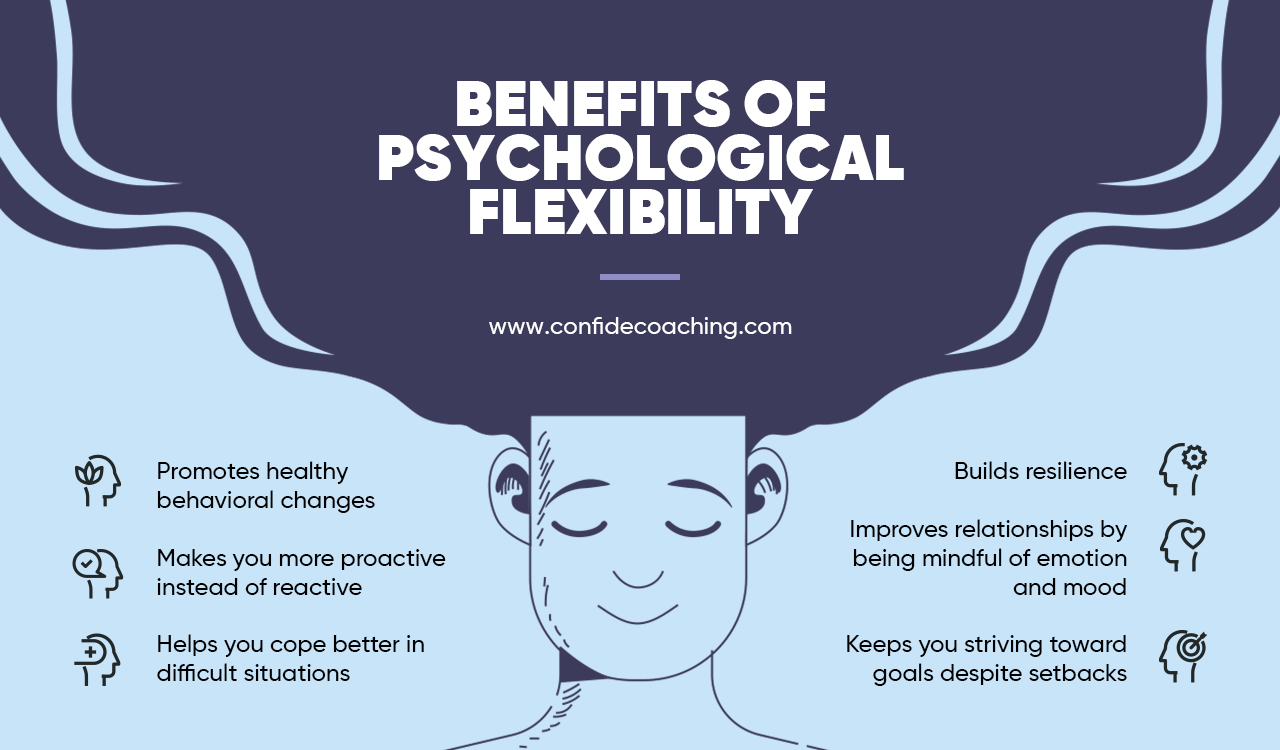
Step 2: Find What’s Holding You Back
Identifying your non-negotiables is an essential first step in finding clarity and direction in your life. However, even with a clear understanding of what’s most important to you, you may find yourself unable to move forward. This is often due to various barriers that hold you back, preventing you from living in alignment with your core values. Step 2 focuses on uncovering and addressing these barriers, enabling you to move past them and make meaningful progress toward your goals.
Introduction to the Concept of Barriers
Barriers are obstacles that prevent you from achieving your full potential or moving forward in the direction you desire. These barriers can be internal, such as limiting beliefs or unproductive habits, or external, such as societal expectations or financial constraints. Understanding the nature of these barriers is the first step in overcoming them.
Understanding Internal and External Barriers
Internal barriers are psychological or emotional obstacles that originate within you. They often manifest as self-doubt, fear, or ingrained negative beliefs. External barriers, on the other hand, are obstacles that arise from your environment or circumstances, such as financial limitations, societal expectations, or lack of resources.
Recognizing both types of barriers is crucial because they often work in tandem to keep you stuck. For instance, an internal barrier like a fear of failure might be reinforced by an external barrier such as societal pressure to conform to a particular career path. By identifying these barriers, you can begin to dismantle them and create a clear path forward.
The Impact of Barriers on Progress
Barriers can significantly stall personal and professional growth. When left unrecognized or unaddressed, they create a sense of inertia, where no matter how much you want to move forward, something seems to hold you back. This can lead to frustration, diminished self-esteem, and even a loss of motivation.
Addressing barriers early in the process is key to maintaining momentum and making progress. The sooner you identify what’s holding you back, the sooner you can take action to overcome it, allowing you to move closer to your goals with confidence and clarity.
Identifying Limiting Beliefs
Limiting beliefs are one of the most common internal barriers people face. These are deeply held beliefs that constrain your ability to achieve your full potential. They often operate unconsciously, influencing your thoughts, emotions, and behaviors in ways that undermine your goals.
Definition of Limiting Beliefs
Limiting beliefs are self-imposed barriers that stem from negative or inaccurate assumptions about yourself and the world. They are often formed in response to past experiences, societal conditioning, or fears about the future. These beliefs create a mental ceiling that limits what you believe you can achieve.
Psychologist Carol Dweck, known for her work on the growth mindset, explains that individuals with a fixed mindset believe their abilities are static and unchangeable, leading them to avoid challenges and give up easily. In contrast, those with a growth mindset see challenges as opportunities to learn and grow, which helps them overcome limiting beliefs. Dweck’s research shows that by adopting a growth mindset, you can shift limiting beliefs and open yourself up to new possibilities.
Identifying Unproductive or Negative Habits
Some common unproductive habits include:
- Procrastination: Delaying tasks or decisions, often due to fear or a lack of motivation.
- Negative self-talk: Constantly criticizing or doubting yourself, which can erode self-esteem and reinforce limiting beliefs.
- Overcommitment or lack of boundaries: Taking on too many responsibilities or failing to set limits, leading to burnout and reduced effectiveness.
How Limiting Beliefs Hold You Back
Limiting beliefs are particularly insidious because they shape your reality. If you believe you’re not good enough, you may avoid taking risks or pursuing opportunities, thereby reinforcing the belief. This self-sabotaging cycle keeps you stuck, unable to progress toward your goals.
To break free from limiting beliefs, it’s important to recognize them for what they are: unfounded assumptions that do not reflect your true potential. Byron Katie, creator of “The Work,” developed a powerful process for identifying and questioning limiting beliefs. Through her method, you ask four questions: “Is it true? Can you absolutely know it’s true? How do you react when you believe that thought? Who would you be without that thought?” By systematically questioning these beliefs, you can dismantle them and create new, empowering narratives that support your growth and success.
Examining Unproductive Habits
Habits are the routines and behaviors that make up our daily lives. While some habits are positive and contribute to our well-being, others can be unproductive or even harmful, reinforcing limiting beliefs and preventing progress.
The Role of Habits in Daily Life
Habits are powerful because they operate automatically, often without conscious thought. They are the brain’s way of conserving energy by creating shortcuts for routine behaviors. However, this automatic nature means that once a habit is established, it can be difficult to change, even if it’s counterproductive.
James Clear, author of Atomic Habits, emphasizes that small changes in habits can lead to significant improvements over time. He explains that habits are formed through a loop of cue, craving, response, and reward. By understanding and altering these elements, you can break negative habits and replace them with positive ones that support your goals.
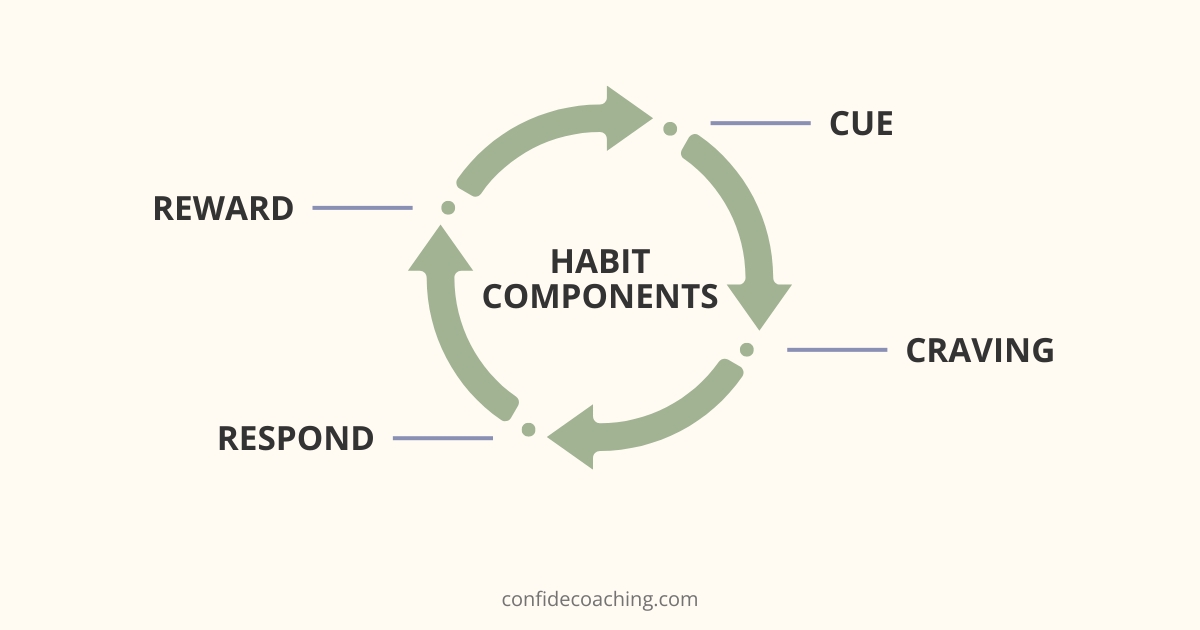
Common Examples of Limiting Beliefs
Some common limiting beliefs include:
- “I’m not good enough.” This belief can manifest as a fear of failure or a lack of confidence in your abilities, leading to missed opportunities.
- “I don’t have enough time/money/resources.” This belief often justifies procrastination or inaction, as you convince yourself that you need more before you can start.
- “I’m too old/young to start something new.” This belief can prevent you from pursuing new opportunities or making significant life changes, as you feel limited by your age.
The Impact of Habits on Progress
Unproductive habits can create a cycle of stagnation. For example, procrastination can lead to missed opportunities, which in turn reinforces feelings of inadequacy. Breaking these habits requires conscious effort and the development of new, positive routines that support your goals.
To change an unproductive habit, start by identifying the cue that triggers it, the routine it follows, and the reward it provides. James Clear suggests focusing on making the desired habit easy to start and satisfying to complete. Over time, these small adjustments can lead to lasting change, helping you build momentum and move toward your goals.
Challenging Societal “Shoulds”
Societal “shoulds” refer to the expectations and norms imposed by society that dictate how we should live our lives. These external pressures can create internal conflict when they clash with our personal values and desires.
Understanding Societal “Shoulds”
Societal “shoulds” are the unspoken rules about what is considered acceptable or desirable in various aspects of life, such as career, relationships, and lifestyle choices. These expectations are often reinforced by cultural norms, media, and peer pressure.
Common Societal “Shoulds” That Limit Personal Freedom
Some common societal “shoulds” include:
- “You should follow a traditional career path.” This expectation can discourage people from pursuing unconventional or creative careers.
- “You should prioritize stability over passion.” This belief can lead to choosing a secure but unfulfilling job, rather than following a passion.
- “You should conform to societal roles and expectations.” This pressure can prevent people from exploring their true identity or living authentically.
The Effect of Societal “Shoulds” on Personal Decision-Making
Societal “shoulds” can create internal conflict when they contradict your core values or desires. This conflict can lead to decisions that are out of alignment with who you truly are, resulting in dissatisfaction and a lack of fulfillment.
Byron Katie’s process, “The Work,” is particularly effective in challenging societal “shoulds.” By questioning the thoughts and beliefs imposed by society, you can determine whether they align with your true values. This method allows you to release the pressure of conforming to external expectations and make decisions that are more authentic and fulfilling.
Strategies for Overcoming Barriers
Overcoming the barriers that hold you back requires a combination of self-awareness, intentional action, and a willingness to challenge the status quo. Here are some strategies to help you break free from limiting beliefs, unproductive habits, and societal “shoulds.”
Shifting Limiting Beliefs
To shift limiting beliefs, start by identifying the specific beliefs that are holding you back. Once identified, challenge their validity by gathering evidence that contradicts them. Replace these limiting beliefs with empowering ones that support your goals and reflect your true potential.
Carol Dweck’s research on the growth mindset offers a powerful tool for this process. By adopting a growth mindset, you can reframe challenges as opportunities for growth, thereby shifting your limiting beliefs and opening yourself up to new possibilities.
Breaking Unproductive Habits
Breaking unproductive habits involves understanding the cues and rewards that drive them. Replace negative routines with positive behaviors that align with your goals. For example, if procrastination is a habit, try breaking tasks into smaller, manageable steps to build momentum.
James Clear suggests using the “Two-Minute Rule” to make starting new habits easier: break down your desired habit into something you can do in just two minutes. This approach makes it more manageable to begin and, over time, can lead to lasting change.
Redefining Societal “Shoulds”
Redefining societal “shoulds” starts with recognizing that you have the power to define your own path. Question the expectations that have been imposed on you and determine whether they align with your values. Make conscious choices that reflect your authentic self, rather than conforming to external pressures.
Tara Brach, a psychologist and meditation teacher, emphasizes the importance of mindfulness and self-compassion in this process. By practicing mindfulness, you can become more aware of societal pressures and how they affect you. Self-compassion helps you treat yourself with kindness as you navigate the challenge of redefining your path.
Step 3: Define Your Willingness and Readiness for the Future
After identifying your non-negotiables and addressing the barriers that hold you back, the next crucial step is defining your willingness and readiness for the future. This step is about understanding what you’re prepared to pursue right now and what might require more time, growth, or preparation. By gaining clarity on these aspects, you can make informed decisions and create a realistic plan for moving forward.
Introduction to Clarity and Readiness
The Importance of Clarity in Moving Forward
Clarity is the foundation of effective decision-making. Without it, you may find yourself making choices that don’t align with your true goals or values. When it comes to planning for the future, getting clear on what you’re ready and willing to do is crucial. This clarity allows you to set realistic goals, prioritize your actions, and move forward with confidence.
When you have clarity about your willingness and readiness, you can better navigate opportunities and challenges. Marie Forleo, entrepreneur and author of Everything is Figureoutable, often emphasizes that clarity comes from engagement, not thought. Known for her dynamic approach to personal growth and decision-making, Forleo highlights that taking action, even in small steps, is essential to gaining the clarity you need to move forward effectively.
Differentiating Between Willingness and Readiness
Willingness and readiness, though interconnected, are distinct concepts. Willingness refers to what you are open to doing—your openness to taking on new challenges, making sacrifices, or investing time and energy. Readiness, on the other hand, is about being prepared—having the necessary skills, resources, and mental or emotional capacity to take on a particular task or goal.
Understanding the interplay between these two concepts is essential. You might be willing to take on a new project, but if you’re not ready—perhaps due to a lack of skills or resources—you could set yourself up for unnecessary stress or failure. Conversely, you might be ready to take on something new but lack the willingness, often due to fear or uncertainty. By assessing both your willingness and readiness, you can better determine your next steps.
Assessing Your Willingness
Identifying What You Are Willing to Do
To assess your willingness, start by reflecting on what you’re open to pursuing. This might involve taking risks, making sacrifices, or investing significant time and energy. Consider asking yourself questions like:
- What am I truly passionate about pursuing right now?
- What am I willing to give up to achieve my goals?
- How much time and effort am I prepared to dedicate to this endeavor?
Gretchen Rubin, author of The Four Tendencies, offers a framework for understanding how different personality types approach willingness and commitment. According to Rubin, understanding whether you are an Upholder, Questioner, Obliger, or Rebel can help you identify what motivates you and how you can best harness your willingness to achieve your goals. For instance, if you are an Obliger, you may find that external accountability significantly enhances your willingness to follow through on commitments. Upholders, on the other hand, thrive when both internal and external expectations are clear and aligned. Questioners need to see the logic and purpose behind a goal before committing to it, often seeking out detailed information and rationale. Rebels resist both internal and external expectations, and they often succeed by pursuing goals that resonate with their personal identity and sense of freedom.
Understanding these tendencies allows you to tailor your strategies for moving forward, ensuring they are aligned with your personal motivations and making it easier to stay committed to your goals.
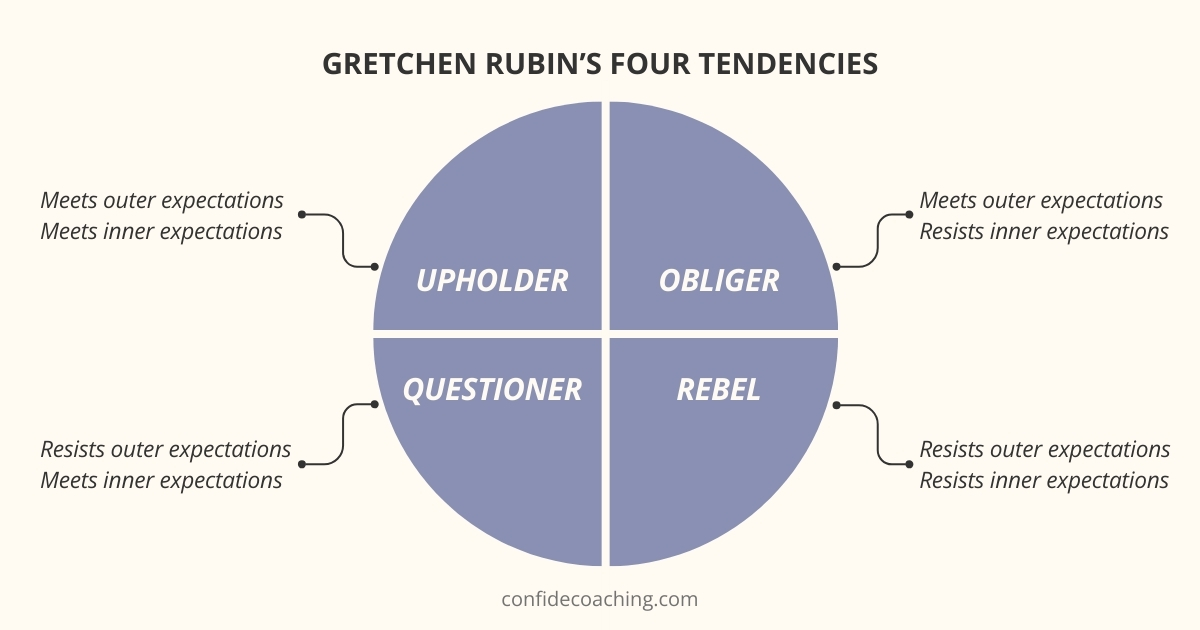
Understanding the Implications of Your Willingness
Once you’ve identified what you’re willing to do, it’s important to consider how this willingness aligns with your overall goals and vision. While being willing to take on new challenges is valuable, overextending yourself can lead to burnout or frustration if your willingness outpaces your readiness.
Reflect on how your willingness fits into the bigger picture of your life. Are you willing to take on a new job that aligns with your passion but requires long hours? If so, how will this impact other areas of your life, such as family or self-care? Ensuring that your willingness is balanced with your overall life goals is key to maintaining both momentum and well-being.
Recognizing What You Are Not Yet Ready For
Honest Self-Assessment
Being honest with yourself about what you’re not yet ready for is just as important as understanding your willingness. Acknowledging where you need more time, resources, or growth helps prevent premature decisions that could lead to setbacks. It also allows you to create a more realistic and sustainable plan for achieving your goals.
To assess your readiness, consider factors such as:
- Do I have the necessary skills or knowledge?
- Am I emotionally or mentally prepared for this change?
- Do I have the resources and support I need?
By taking a clear-eyed view of your current state of readiness, you can identify areas where further preparation is needed before moving forward.
Common Barriers to Readiness
Several barriers can affect your readiness to pursue new opportunities, including:
- Fear of failure or success: Fear can prevent you from stepping into new roles or taking on challenges, even when you have the capacity to succeed.
- Lack of skills, resources, or knowledge: Not having the necessary tools can make you feel unprepared, which might delay progress.
- Emotional or psychological barriers: Mental health challenges, stress, or unresolved emotional issues can hinder your readiness.
Acknowledging these barriers allows you to address them proactively. For example, if you lack specific skills, you might decide to take a course or seek mentorship before diving into a new project.
Accepting and Respecting Your Limits
It’s essential to accept and respect your current limits, rather than pushing yourself prematurely into uncomfortable situations. This doesn’t mean avoiding challenges; rather, it’s about pacing yourself and recognizing that growth takes time. By respecting your limits, you can build your readiness gradually and sustainably.
Creating a Plan and Prototyping
Developing a Clear Plan
Once you have a clear understanding of your willingness and readiness, the next step is to develop a practical plan that aligns with both. Start by setting achievable milestones based on your current state. These milestones should reflect your willingness to take action and your readiness to handle the challenges ahead.
For example, if you’re willing to start a new business but not yet ready to quit your day job, your plan might include steps like developing a business model in your spare time, building a savings cushion, and gradually transitioning to full-time entrepreneurship.
Introduction to Prototyping
Prototyping is a concept introduced by Bill Burnett and Dave Evans in their book Designing Your Life. It involves testing ideas on a small scale before fully committing to them. This approach allows you to explore different options without the pressure of making irreversible decisions.
Prototyping can be particularly useful when you’re uncertain about your readiness. By trying out different paths in a low-risk way, you can gain valuable insights into what works for you and what doesn’t, all while building your confidence and skills.

Implementing the Odyssey Plan from “Designing Your Life”
The Odyssey Plan is another tool from Burnett and Evans, designed to help you map out multiple versions of your future. This exercise involves creating three distinct plans:
- Plan A: What you’re doing now if things continue as they are.
- Plan B: What you would do if Plan A became impossible.
- Plan C: What you would do if money, resources, or fear were not an issue.
By developing these plans, you can explore different scenarios and identify the path that best aligns with your willingness and readiness. The Odyssey Plan helps you gain clarity on your future vision and provides a structured approach to making informed decisions.
Aligning Your Vision with Reality
Matching Your Vision with Your Current Willingness and Readiness
To ensure your vision aligns with your current willingness and readiness, regularly revisit your plans and adjust them as needed. As you grow and evolve, your willingness and readiness may change, requiring you to adapt your approach.
For instance, as you build new skills or overcome emotional barriers, you might find that you’re ready to take on more significant challenges. Conversely, if you experience setbacks, it’s okay to adjust your timeline or scale back your goals temporarily.
Preparing for Growth and Change
Growth and change are inevitable parts of the journey. As you progress, new opportunities and challenges will arise, requiring ongoing reassessment of your willingness and readiness. By staying flexible and open to change, you can continue to align your actions with your evolving goals and values.
In summary, defining your willingness and readiness is a dynamic process that requires self-reflection, honesty, and a strategic approach. By understanding what you’re prepared to pursue and what needs more time, you can create a plan that is both ambitious and realistic. Through prototyping and regular reassessment, you can navigate your path forward with confidence, clarity, and intention.
Summary: 3 Steps to Finding What’s Next for You
Finding clarity and direction in life is an ongoing journey that requires a deep understanding of yourself and your values. The three-step process outlined in this article provides a structured approach to navigating this journey, helping you make decisions that are both purposeful and aligned with who you are.
Recap of the Three Steps
The first step, Identifying Your Non-Negotiables, is foundational. Recognizing and honoring your non-negotiables—those core values and principles you cannot compromise—ensures that your decisions are grounded in what truly matters to you. Simon Sinek’s concept of “Start with Why” reinforces this idea, emphasizing that understanding your core motivations (your “why”) is key to making aligned and fulfilling decisions.
The second step, Overcoming Barriers to Progress, involves identifying and addressing the internal and external obstacles that hold you back. This includes confronting limiting beliefs, unproductive habits, and societal “shoulds” that create roadblocks in your life. By doing so, you clear the path for personal and professional growth. Overcoming these barriers allows you to move forward with a greater sense of purpose and determination.
The third step, Gaining Clarity on Willingness and Readiness, focuses on assessing what you are willing to do and what you are ready to take on. Getting clear on these aspects helps you make informed decisions about your future, ensuring that you don’t take on too much too soon or miss opportunities due to a lack of readiness. Clarity here informs your planning, allowing you to set realistic goals and timelines.
Moving Forward with Confidence and Purpose
To successfully integrate these steps into your life, it’s essential to continuously reflect on and refine your vision. As you move forward, ensure that your non-negotiables remain at the forefront of your decision-making process. Overcoming barriers isn’t a one-time task; it requires ongoing effort to address new challenges as they arise. This perseverance is where Angela Duckworth’s concept of “Grit” becomes relevant—maintaining momentum and being flexible in your approach is key to long-term success.
Refining your vision and plans is an ongoing process. As your circumstances and readiness evolve, it’s important to stay true to your core values while adapting your plans as needed. This flexibility ensures that you remain aligned with your goals without becoming rigid or resistant to change.
Next Steps: Maintaining Momentum and Embracing Flexibility
To keep momentum as you implement your plans, set short-term goals and regularly review your progress. This approach helps you stay on track while allowing room for adjustments. Embrace flexibility and openness, understanding that the journey is not always linear. Being resilient and adaptable will help you navigate challenges and seize new opportunities as they arise.
Now is the time to take action. Reflect on your non-negotiables, confront the barriers that have been holding you back, and gain clarity on what you are willing and ready to do. Start with small steps that align with your goals, and commit to this process with the understanding that growth and change are part of the journey. Your future is shaped by the choices you make today—embrace this opportunity to design a life that truly reflects who you are and what you value. The next chapter of your life is yours to write, so take the first step and move forward with confidence and intention.

Paul Strobl, MBA, CPC
Owner of Confide Coaching, LLC
Paul is a Master Life Coach for GenX and GenY executives and business owners. Originally from Houston, Texas, he has been location independent for most of his adult life. He currently resides in the Rhodope Mountains of Bulgaria near the Greek border with his brilliant wife, 14-year-old stepson (officially adopted in 2021!) and a Posavac Hound rescue.
References
Burnett, B., & Evans, D. (2016). Designing Your Life: How to Build a Well-Lived, Joyful Life. Knopf.
Dweck, C. S. (2007). Mindset: The New Psychology of Success. Ballantine Books.
Duckworth, A. (2016). Grit: The Power of Passion and Perseverance. Scribner.
Forleo, M. (2019). Everything is Figureoutable. Portfolio.
Katie, B. (2003). Loving What Is: Four Questions That Can Change Your Life. Three Rivers Press.
Perkins, B. (2020). Die with Zero: Getting All You Can from Your Money and Your Life. Mariner Books.
Rubin, G. (2017). The Four Tendencies: The Indispensable Personality Profiles That Reveal How to Make Your Life Better (and Other People’s Lives Better, Too). Harmony.
Sinek, S. (2011). Start with Why: How Great Leaders Inspire Everyone to Take Action. Portfolio.
Clear, J. (2018). Atomic Habits: An Easy & Proven Way to Build Good Habits & Break Bad Ones. Avery.
Brach, T. (2019). Radical Compassion: Learning to Love Yourself and Your World with the Practice of RAIN. Penguin Life.

